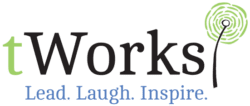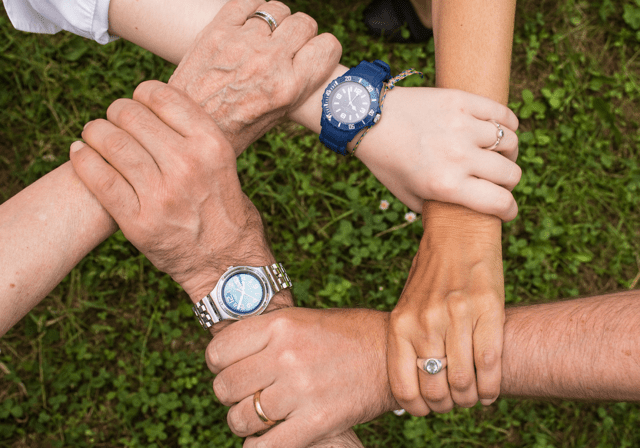Affinity bias is a type of unconscious bias that impacts both our professional and personal lives, sometimes with repercussions. In the simplest terms, affinity bias is the tendency to gravitate towards those that reminds us of ourselves. It’s a natural tendency to feel most comfortable and at ease with those that share similar experiences, backgrounds, and interests. However, having affinity bias can affect workplace decisions be it recruitment, retention, and product or services offered.
If we have a brain, we have bias. Therefore, managing, mitigating, and recognizing affinity bias is imperative to unbiased business decisions. The problem is that it can be one of the most difficult biases to recognize within ourselves.
A popular DEI exercise to assist leaders in recognizing their own affinity bias is called the “Circle of Trust”. If you are interested in completing the exercise yourself visit https://toolbox.hyperisland.com/the-circle-of-trust-unconscious-bias (however, it is recommended that this is a facilitated exercise by a DEI trainer).
There are five curated steps to the exercise. It’s a simple exercise yet sometimes the simplest of exercises can have the most impact as most self-discovery work offers insights into the lens you view your world.
Step 1- Understand what unconscious bias and affinity bias is (see above); from there- define your ‘go to’ people at work. These individuals are your inner sanctum; your sounding board; your most trusted advisors.
Step 2- Create 9 columns on a piece of paper
Step 3- In the first column write down your top five ‘go to’ people at work with the label, “Name”- the rest of the 8 columns should be labelled with the following- Gender, Sexual Orientation, Race/Ethnicity, Age, Education Level, Nationality, Ableness, Native Language
Step 4- Complete each column
Tina’s Circle of Trust
| Name | Gender (Male or Female) | Sexual Orientation (Straight or LGBTQ2+) | Race/Ethnicity (Caucasian, Asian, Black, Indigenous) | Age (ie Boomer, Gen X, Millennial) | Education Level (ie. high school, post secondary, doctorate etc) | Nationality (ie. Canadian, American, Filipino, Danish) | Ableness* (Y- similar to you) | Native Language ie. (English, Mandarin, French) |
| Kevin | M | S | C | B | Post | Cdn | Y | English |
| Christine | F | S | C | X | Post | Cdn | Y | English |
| Brenda | F | S | C | X | Post | Cdn | Y | English |
| Leila | F | S | C | X | Post | Cdn | Y | English |
| Bethany | F | S | C | X | Post | Cdn | Y | English |
** as a professional speaker, I earmarked certain individuals within my speaking industry that I tend to ‘go to’ with questions, concerns, feedback that I inherently trust; though there are many others these top 5 were the first that came to mind; all are professional speakers though one is a speaking agent; names have been changed for privacy
Step 5 – Reflect on your findings. What I realized about myself is that there is very little diversity within my circle of trust and inadvertently a lot of affinity bias. Most of my circle of trust identify as female, Gen X’s, cis gender Caucasian (though I would identify as Asian), English speaking, able-bodied Canadians with post-secondary education.
The first question I asked myself and, I suspect, others might ask themselves the same exact question if they noticed many similarities within their own circle of trust is the following- is it bad to see so much similarity amongst my circle of trust?
According to Hyperisland, the creators of the exercise, our closest advisors and those we rely on most for sound insight are often an unconscious mirror of ourselves. For example, education is something I value therefore unconsciously I may seek other’ opinions who I know have post-secondary education. I may value their opinion more unconsciously or consciously. As a BIPOC female speaker I am a bit surprised that I do not have any BIPOC representation within my circle of trust given how much identify with being a BIPOC. Though, upon reflection, I do seek out other opinions depending on the question I may have but I do believe I default to my circle of trust.
In business, it becomes apparent why having a circle of trust can lead to very biased decision-making while narrowing potential opportunities and growth.
If our circle of trust was wider to include more diverse perspectives how might this affect our views when it comes to customer acquisition, customer services, globalization, new and untapped markets, new and untapped services offered and hiring practices. Often firms will say, “she wasn’t a good cultural fit”. What is this statement based on? Because the reality is that our first impressions are made in seconds and often it’s our affinity bias driving hiring decisions rather than mitigating and managing unconscious bias when hiring.
Affinity bias is also reflected in promotions. When leaders ‘see themselves’ in their younger proteges they tend to champion that individual and nurture potential. Though this isn’t necessarily bad, how many others are often not promoted or continuously passed over for promotions because they are deemed different. Should we be hiring the apparent ‘culture fit’ and bypass the alleged ‘misfit’? The misfit might be more innovative, creative and imaginative. Maybe they are neurodivergent hence eye contact might be overstimulating. This lack of eye contact might seem insincere for some; they may find the lack of eye contact makes them feel uncomfortable. Perhaps the individual has ADHD and tends to fidget and/or doodle during an interview. This might seem very off-putting for some; a coping mechanism for someone else. Hence, our affinity biases come into play, so we continue to hire and promote those that remind us of ourselves.
According to the McKinsey Institute, the leading authority when it comes to diversity and inclusion statistics, 20% of women surveyed said they were often the only female in the room or one of the few. This is very representative with Board representation as well with potentially one woman on a Board and/or one BIPOC on a Board. At the c-suite level, if c-suite leaders tend to depend on their closest advisors – their inner circle- the ‘ol boys club’ for consultation, it not only leads to a longing to belong at the workplace for those that are not part of that circle but also leads to a narrow strategic and operational viewpoint.
Tamryn Batcheller-Adams wrote an article titled, “Who’s in your Top Ten?” and brilliantly wrote, “without leaders addressing their unconscious bias everyone stands to lose- especially the organization. This is because we not only sideline those who are different to us, perpetuating bias in the workplace but we also severely limit the potential of teams by diluting its diversity.”
She goes on to say, “if you want to establish robust and dynamic teams in your organization, you have to start with addressing your own unconscious blindspots. Thereafter as leaders, you can begin to actively put together teams of greater diversity. This means giving opportunity to people whom ordinarily you may have unconsciously overlooked or perhaps even judged more harshly based on your personal bias.
According to a 2019 study of “Women in the Workplace”, for every 100 men promoted to a managerial position, only 72 women were given the same opportunity to advance. This lessens for BIPOC women. However, it’s a perpetuating cycle if key decisions are primarily being made by men, then promoting and hiring women to leadership positions will be lessened as men may unconsciously trust the advice of their closest advisors who are also men. If men relate to other men, there’s a good chance that another man will be promoted to the position or tokenism becomes the default. This type of practice is not only detrimental for business, but also for everyone.
By widening your circle of trust to include more diverse perspectives we can make better decisions without bias.

